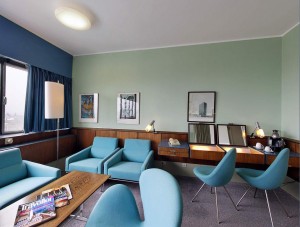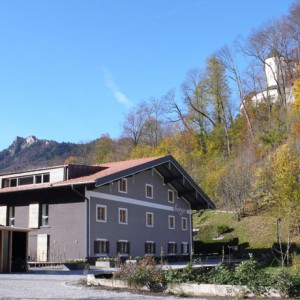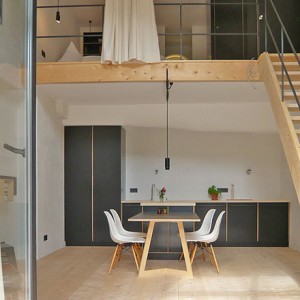It all started with "boutique" hotels. which, if one is brutally honest, were simply small hotels. Or guest houses as we used to call them. Back in the day.
Then slowly, ever so slowly the term "design hotels" emerged and today - whether used to describe a hotel where each room has it's own "identity" or an establishment furnished with designer furniture - design hotels represent an important part of the accommodation repertoire, and tourist marketing concept, of all major cities. As with so much in life, the concept is however far from new.

One of the first design hotels was the SAS Royal in Copenhagen: and its status as design hotel owes less to marketing and much more to the character of the architect - Arne Jacobsen. The old master of Danish design was happiest when in complete control of a project, and often insisted on creating the interiors and furnishings for his buildings. As with the SAS Royal. Jacobsen's famous Egg and Swan chairs - a ubiquitous feature of many design hotels today - were created specially for the lobby of the SAS Royal, and even the door handles are true design classics.
At the time of its completion in 1960 the hotel was the largest building in Scandinavia and set new architectural and aesthetic standards. And almost 50 years later the hotel retains both its charm, importance and completeness as the perfect match of building and contents.
Few modern "design hotels" come close to matching Jacobsen's masterpiece, simply because the idea evolves from the wrong direction and with the wrong intention. Or perhaps more succinctly; they simply exist to make money.

One modern establishment that does compare to Jacobsen's vision is Berge; a harbourage for weary souls in southern Germany that was created very much in the character of its designer Nils Holger Moormann.
Essentially a collection of self catering flats at the foot of the alps, Berge embodies the Moormann philosophy of simple luxury and of finding your own pleasure in items and situations rather than having it force feed by an omnipotent media. And of going your own way.
In contrast to most hotels, Moormann boasts loudly that Berge has no WiFi, that the beds are narrow and that the mobile telephone reception is poor. Technically disadvantages in the modern mass tourist world, in Nils Holger Moormann's world they become the raison d'etre to check- in.

Whereas in Copenhagen all rooms are identical and are furnished with the works of Arne Jacobsen, in Aschau im Chiemgau each room has it's own style and identity. In addition the furniture reflects a more eclectic vision, combining a mix of Moorman products and other design classics such as the Vitra DSR by Charles and Ray Eames. A brave decision from a company that makes their money selling furniture, and certainly not something that Arne Jacobsen would have approved of.
And because the project is based on principle rather than naked profit, the balance between building and contents is retained just as perfectly as at the SAS Royal.
The design hotel is here to stay and will continue to excite and amuse the millions of budget airline city-breakers who fill their rooms every weekend. Whereas the work of Arne Jacobsen has become synonymous with the concept, Berge is likely to remain a solitary example of its type. Something which will no doubt please Nils Holger Moormann just as much as it would have Arne Jacobsen.